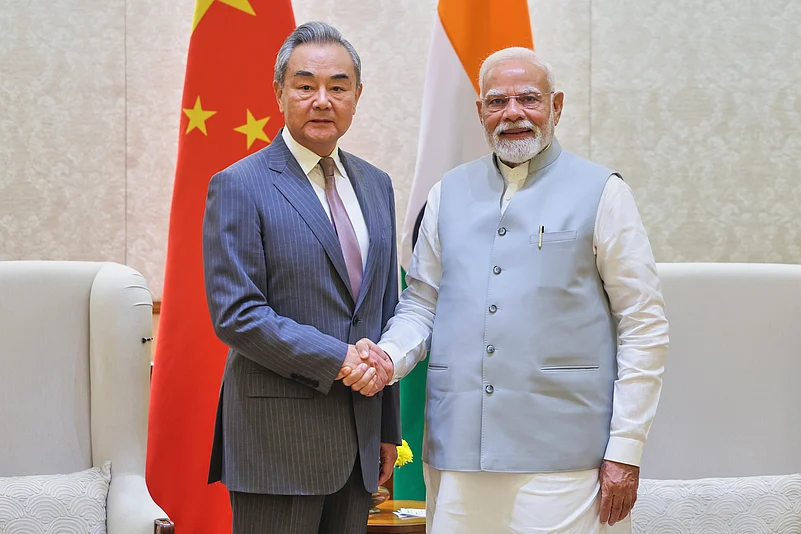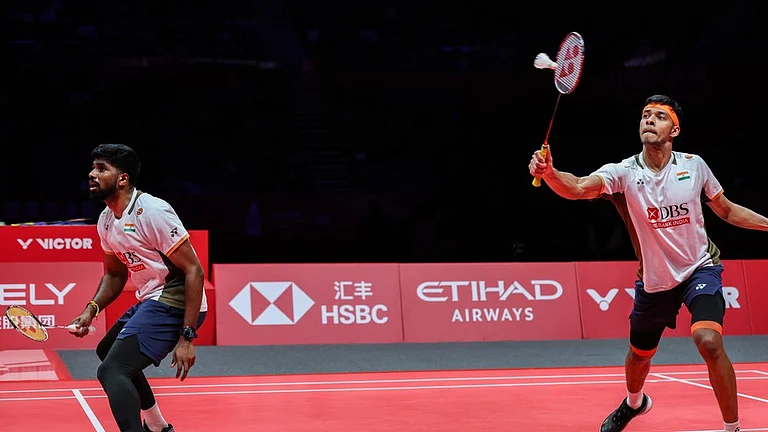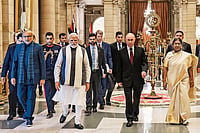
Wang Yi handed over a personal message and invitation from President Xi Jinping to the Prime Minister for the Shanghai Cooperation Organisation summit being held in Tianjin from August 31 to September 1.
The boundary talks conducted by Senior Representatives of India and China started in 2003 and has so far held 24 rounds of negotiations.
China has assured India that it will restart supplies of fertilisers, rare earth minerals and tunnel boring machines (TBMs), indicating that Beijing is committed to full scale engagement with India
India and China are holding their second round of boundary talks since the 2020 clash in Ladakh. The first was on December 18 last year when National Security Adviser (NSA) Ajit Doval went to Beijing to resume negotiations on the long running border dispute that is at the core of testy ties between the two Asian rivals. While the boundary talks are important, Chinese Foreign Minister Wang Yi's visit is to be seen in the broader context of improving frayed relations between Asia’s two largest countries. After his meeting with Doval, Wang called on Prime Minister Narendra Modi who heads to China at the end of the month.
Wang Yi handed over a personal message and invitation from President Xi Jinping to the Prime Minister for the Shanghai Cooperation Organisation summit being held in Tianjin from August 31 to September 1. Modi accepted the invite and conveyed his thanks to Xi.
The Prime Minister welcomed "the steady and positive progress" in ties since his meeting with President Xi in Kazan last year. "Prime Minister emphasised the importance of maintaining peace and tranquility on the border, and reiterated India's commitment to a fair, reasonable and mutually acceptable resolution of the boundary question," the MEA said in a statement after the meeting.
The Prime Minister also underlined that stable, predictable and constructive ties between India and China will contribute significantly to regional and global peace and prosperity, the statement added.
In his turn, the visiting minister shared his views on the "positive outcome" of his talks with both NSA Doval and Foreign Minister Subramayam Jaishankar.
Boundary Talks
The boundary talks conducted by Senior Representatives of India and China started in 2003 and has so far held 24 rounds of negotiations.
Expectations of substantive progress are low, but the quick succession of meetings is significant in itself, for it sends a signal of cautious rapprochement at a moment when the global order is unsettled by United States President Donald Trump’s tariff offensive. Wang Yi’s visit is part of the high-level exchanges that mark a return to normal diplomatic engagements between countries.
"There is a new energy and momentum in bilateral ties,’’ Doval noted in his opening remarks as the two delegations sat down for talks. He added, "Discussions in the SR [Senior Representatives] talks covered issues related to de-escalation, delimitation and boundary affairs,’’ a MEA statement released at the end of the two-day discussions said.
Both Sides Raise Concerns
Smarting from the aftermath of the Pahalgam terror attack in Kashmir, India raised the issue of cross-border terrorism during the foreign ministers' talks. Jaishankar reminded Wang that the original objective of the SCO was to counter terrorism in all its forms. Though Pakistan was not mentioned, the implication was obvious. "Minister Wang Yi concurred that countering terrorism should be given the highest priority,’’ the MEA statement added.
The talks were frank, with both sides raising their respective concerns. India’s concerns on the construction of a mega dam in the lower reaches of the Brahmaputra, called the Yarlung Tsangpo in China, and the implications of the move on lower riparian states was raised by Jaishankar. The need for transparency on the construction was emphasised by India.
With Taiwan now a hot button issue, Wang raised the issue of India’s relations with Taiwan. India like the rest of the world acknowledges the one-China policy but maintains ties with Taiwan that revolve around economic, technological and cultural ties. India pointed out that China too has robust economic ties with Taiwan.
Resuming Supplies
The good news is that China has assured India that it will restart supplies of fertilisers, rare earth minerals and tunnel boring machines (TBMs), indicating that Beijing is committed to full scale engagement with India.
India’s decision to normalise ties with China followed last October’s agreement on disengagement of troops from the last remaining friction points of Depsang and Demchok and on patrolling along the Line of Actual Control in Ladakh.
Without complete disengagement, it would have been difficult for India to go ahead with normalising ties with its giant neighbour. It is critical for Asia’s two largest countries to start re-engagement. Former Prime Minister Manmohan Singh had once said that managing relations with China was one of India’s biggest foreign policy challenges. For now, the two countries appear poised to reinvigorate relations.
"The contingent has a way of overshadowing, to the point of making one lose sight of the larger narrative of the India-China story. It should not be glossed over that this relationship has been making incremental strides after it was hauled out of the post-Galwan freeze, and it has been driven by a combination of factors, not the least of which is that this relationship is critical in many ways for both, not merely economically, but politically and strategically as well,’’ said Alka Acharya of Jawaharlal Nehru University ,who follows developments in China closely.
"The larger power shifts and global realignments underway over the past decade are further compelling factors. It is certainly possible to make a case for Trump and his tariffs pushing India and China closer, just as it was argued that China was pushing India and the United States together when [the] Galwan [clash] happened. I think we must not lose sight of the forest for the trees," she added.
Acharya believes that India-China ties stand on their own merit and that even without the Trump tariffs, the two major Asian powers would have had to engage for economic as well as political reasons.
"The increasing comprehensive asymmetry between India and China has been inducing a rethink in India for quite a while now. I do not subscribe to the view that the Trump shock has made India return to the drawing board," she explained, arguing that visits from both sides have taken place regularly, moving the process of resolution of issues, though it is no easy task, forward. She cites regional factors as well. "I believe we have sufficient reasons to look at India-China relations as important for both. Both would not like to go down in history as having been responsible for derailing the Asian Century,’’ she said.
Border Dispute: A British Legacy
The India-China boundary dispute goes back to the time of British rule. In 1914, British India and Tibet agreed to mark a boundary to separate the territory of both countries. The line, called the McMohan Line, was named after the British official who demarcated the land border. The agreement was reached during the Simla Convention. After independence, India accepted the McMohan Line as the official boundary between India and China. However, the Chinese, who took over Tibet, never accepted what they called a colonial legacy of the British.
The unmarked boundary between India and China is the reason for the ongoing dispute between the two nations. These differences led to a brief border war in 1962, where the People’s Liberation Army troopers marched into Arunachal Pradesh and ran over a poorly-equipped Indian Army. The PLA came down the hills to Assam and then, just as suddenly, withdrew. China claims the entire state of Arunachal in the east as part of Tibet. Beijing is keen to take back Tawang, where a famous Buddhist monastery now stands.
China has resolved its border disputes with several of its neighbours. However, the India-China land boundary remains a sore point in relations and until the dispute is finally settled, the chance of another border flare-up remains a constant concern.



























